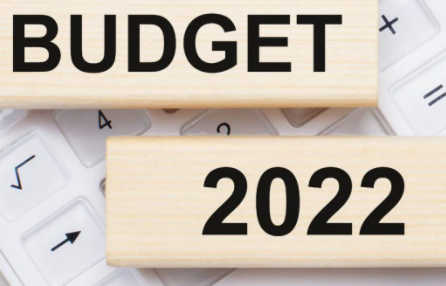Finance Minister Nirmala Sitharaman delivered the Union Budget for 2022 India on Tuesday, with the goal of supporting robust economic development via public investment.
The government’s total spending for the fiscal year 2022-23 is anticipated to be Rs 39.45 lakh crore, while total receipts are estimated to be Rs 22.84 lakh crore. The overall borrowings for the next year are expected to be Rs 11,58,719 crore, according to the finance minister.
The sum is around Rs 2 lakh crore greater than the current year’s Budget forecast for borrowings of Rs 9.7 lakh crore.
The Budget prioritized digital currencies, significant infrastructure projects, and small enterprises, among other things.
Here are some of the big announcements: digital rupee and crypto tax:
Loan guarantees for small and medium-sized businesses: The Centre has agreed to prolong the Emergency Credit Line Guarantee Scheme until March of next year. The budget for the plan aimed at providing loans to micro, small, and medium-sized firms, or MSMEs, would be increased by Rs 50,000 crore to Rs 5 lakh crore. Initially, government-guaranteed loans of Rs 3 lakh crore were to be made available to firms under the plan.
The fiscal deficit objective has been met: In the fiscal year 2021-22, India’s budget deficit was 6.9 per cent of GDP, above the target of 6.8 per cent of GDP. The finance minister stated that the government’s goal for the fiscal year 2022-23 would be to keep the imbalance between its profits and spending at 6.4 per cent.
Citizens now have an additional two years after the end of the relevant assessment year to file revised tax returns. The measure was designed specifically to allow taxpayers to amend any omissions or errors made while calculating their tax.
Increase in the tax deduction limit for state employees:
The finance minister recommended raising the tax deduction limit for state government employees from 10% to 14%. She stated that the idea will improve state government employees’ social security benefits and bring them on the level with central government employees.
Gati Shakti: The Gati Shakti project is propelled by seven engines, which include roads, trains, airports, ports, mass transportation, waterways, and logistical infrastructure. Under the master plan, the Centre will develop the national highway network by 25,000 kilometers in 2022-23.
5G rollout strategy: A 5G spectrum auction will be held in 2022 to allow private firms to carry out telecom services. In 2022-’23, the government will also award contracts for the installation of optical fiber in communities through a public-private partnership. The procedure is projected to be finished by 2025.
The government will encourage the use of “Kisan drones” to analyse crops, digitalise land records, and spray pesticides and fertilizers. In addition, the Centre will encourage chemical-free farming. In the initial stage, the emphasis will be on farmed land along 5-kilometre-wide lanes along the Ganga.
E-passports to be issued beginning in 2022:
Beginning in 2022-’23, the government will issue e-passports for easy foreign travel. The e-passports will be equipped with integrated chips and cutting-edge technologies. Passports are presently issued by the government in the form of printed booklets.
68 per cent of the capital procurement budget would be set aside for the local defence industry to limit imports and increase self-reliance in Armed Forces equipment. According to the finance minister, private businesses will be encouraged to design and build military platforms and equipment in conjunction with the Defense Research and Development Organization. In addition, 25% of the defence R&D budget will be made available to businesses, entrepreneurs, and academics.
The following mental health centers will be established: The government plans to establish a network of 23 telemental health clinics around the country. They will make it easier for people to have access to high-quality mental health counselling and care. The National Institute of Mental Health and Neurosciences, situated in Bengaluru, will serve as its focal point.



